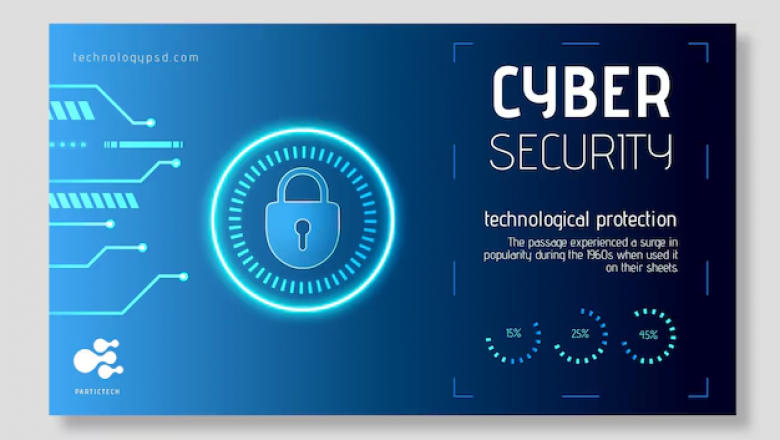views
Mobile applications have become an integral part of our daily lives, from banking and e-commerce to social networking and entertainment. With their growing prominence, they have also become prime targets for cyberattacks. Mobile application penetration testing is a critical process for ensuring the security and resilience of these apps against potential threats.
This blog delves into the importance, methodology, and benefits of mobile application penetration testing, highlighting how 8kSec provides industry-leading services in this domain.
1. What is Mobile Application Penetration Testing?
Mobile application penetration testing (pentesting) is a structured process of identifying vulnerabilities, weaknesses, and potential entry points within a mobile app. The goal is to simulate real-world cyberattacks to uncover security flaws before malicious actors can exploit them.
This testing is essential for ensuring the safety of sensitive user data, maintaining compliance with industry regulations, and building trust among app users.
2. Why is Mobile Application Penetration Testing Important?
Mobile apps often handle sensitive information such as personal details, financial data, and login credentials. Any breach in these apps can lead to:
- Data Theft: Compromise of user information.
- Reputation Damage: Loss of customer trust due to security incidents.
- Financial Losses: Direct and indirect costs from breaches.
- Legal Repercussions: Non-compliance with data protection regulations like GDPR or CCPA.
Pentesting helps organizations proactively identify and mitigate these risks, ensuring the app remains robust and secure.
3. Key Components of Mobile Application Penetration Testing
Effective mobile application pentesting involves a comprehensive approach that includes:
- Static Analysis: Examining the app's source code for vulnerabilities.
- Dynamic Analysis: Testing the app in real-time to identify runtime vulnerabilities.
- Data Storage Assessment: Ensuring sensitive information is stored securely.
- API Testing: Evaluating the security of backend APIs connected to the app.
- Authentication and Authorization Checks: Verifying the effectiveness of login mechanisms and access controls.
- Reverse Engineering Tests: Identifying potential exploits through code decompilation.
4. The Process of Mobile Application Penetration Testing
The pentesting process generally involves the following steps:
- Requirement Gathering: Understanding the app’s functionality, architecture, and intended use.
- Threat Modeling: Identifying potential threats and their impact.
- Testing: Conducting static and dynamic analyses to uncover vulnerabilities.
- Exploitation: Simulating attacks to understand the severity of identified vulnerabilities.
- Reporting: Providing a detailed report with identified risks, their severity, and remediation steps.
- Re-testing: Verifying that vulnerabilities have been successfully resolved.
5. 8kSec: Your Trusted Partner for Mobile Application Security
8kSec is a leading provider of mobile application penetration testing services, offering expert solutions tailored to businesses of all sizes. Their approach combines advanced tools, in-depth methodologies, and skilled professionals to deliver comprehensive security assessments. With 8kSec, organizations can identify vulnerabilities, secure their applications, and ensure compliance with industry standards.
8kSec’s services are designed to empower development teams to build secure mobile applications while protecting sensitive data and maintaining user trust.
6. Benefits of Mobile Application Penetration Testing
- Enhanced Security: Identifying and resolving vulnerabilities before they are exploited.
- Regulatory Compliance: Meeting the security requirements of laws and regulations.
- Improved User Trust: Demonstrating a commitment to safeguarding user data.
- Cost Savings: Preventing costly breaches and mitigating potential liabilities.
- Strengthened Brand Reputation: Ensuring reliability and trustworthiness in the marketplace.
7. Challenges in Mobile Application Penetration Testing
While pentesting offers significant benefits, it comes with challenges such as:
- Evolving Threat Landscape: Keeping up with new attack vectors.
- Platform Diversity: Addressing security across Android, iOS, and other platforms.
- Resource Limitations: Balancing time, tools, and expertise for comprehensive testing.
Partnering with a trusted provider like 8kSec can help organizations overcome these challenges effectively.
8. Future of Mobile Application Security
As mobile apps continue to grow in complexity and usage, the need for robust security measures will only increase. Advancements in AI and machine learning are expected to revolutionize the pentesting landscape, enabling faster and more accurate vulnerability detection.
Organizations must adopt a proactive approach to security, incorporating penetration testing as an integral part of their app development lifecycle.
Conclusion
Mobile application penetration testing is a crucial component of modern cybersecurity strategies. By identifying and mitigating vulnerabilities, organizations can ensure the security of their apps, protect sensitive data, and build trust with users.
8kSec stands out as a trusted partner in this domain, offering cutting-edge solutions that empower businesses to stay ahead of evolving cyber threats. Invest in mobile application pentesting today to secure your app's future and maintain a competitive edge in the digital landscape.






















Comments
0 comment